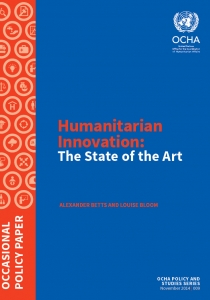alt=""
Credit: L. Bloom
Bottom-Up Innovation
Understanding refugees’ own creative solutions.
How do refugees engage in creative problem-solving to address everyday challenges? This research formed a key part of the original Humanitarian Innovation Project. It began from the recognition that the global debate on ‘humanitarian innovation’ generally focussed on improving ‘top-down’ organisational responses. While important, this dominant focus risks missing an important perspective: the entrepreneurship and problem-solving of refugees themselves.
From around 2011, there was an ‘innovation turn’ within the humanitarian system. Increasingly it was recognised that technology, innovation, and the private sector, have an important role to play in improving humanitarian assistance. Major humanitarian organisations, from UNICEF to UNHCR, began to create ‘innovation units’ within their organisations to look systematically at products and processes that could improve the aid sector. This turn was in many ways pioneering but it neglected an alternative source of innovative: that of refugees and crisis-affected communities themselves. In response, the Humanitarian Innovation Project was created in 2013 based on a recognition of the need to understand and highlight refugees’ own ‘bottom-up’ innovation.
This project served to highlight the ways that refugees are engaging in diverse bottom-up innovation strategies. On a theoretical level, we developed a conceptual framework through which to understand such processes and the barriers and obstacles that displaced populations face in innovation. On an empirical level, the work has examined a number of contexts, including Uganda, Kenya, South Africa, Jordan, the United States of America, and Australia. The main publications that resulted from the research can be found here.
“People will always find creative ways to use the resources available to them, to beat the system, and to change the system to address their own priorities.”
Za'atari Refugee Camp, Jordan


